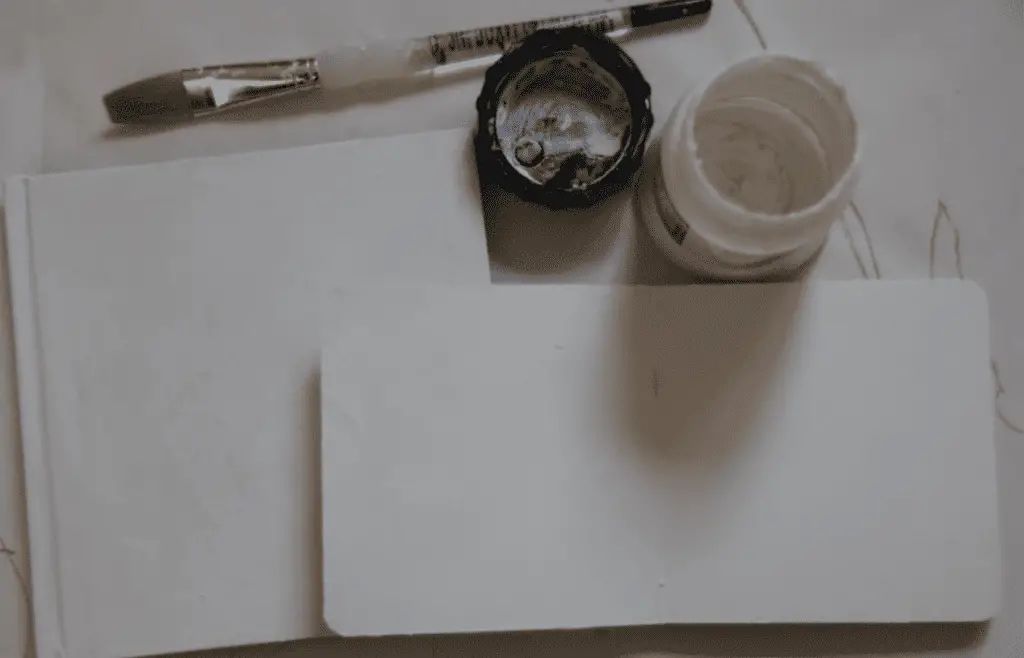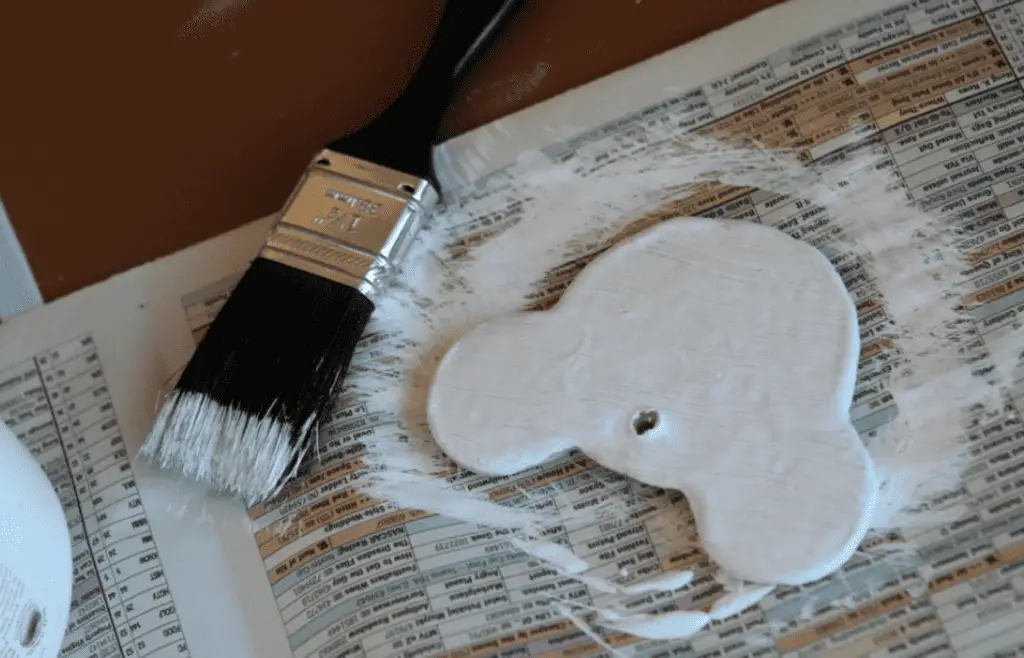Part of what makes gesso such an appealing paint primer is its ability to capture the true essence of a paint and have that paint stick to the surface that’s been adequately primed. Since gesso is often described as a primer that works like glue, can you use gesso as an adhesive?
Gesso doesn’t make an effective adhesive in most situations. The reason it’s often mistaken for an adhesive is because traditional gesso was made with animal skin glue. However, gesso can inadvertently help adhere some materials with a little bit of manipulation and creativity.
If you’re interested in playing with gesso, whether traditional or modern gesso, you can try utilizing it as an adhesive-like product for some fun and creative projects.
Can You Use Gesso as an Adhesive?

Gesso may be able to act like an adhesive for very few things but it’s certainly not the most effective way to glue things together. Because gesso contains chalk, it tends to have the opposite effect that glue does. Even though some gessos contain a glue-based binder, the chalk often counteracts that effect.
Clear gesso can be used as a sealant, helping to seal an item in place on top of a surface. The only thing to consider is that you have to paint over the item you want to seal onto your surface. Depending on your specific project goals, using clear gesso as a sealant actually has a cool effect and you can still paint or draw on top of it.
The nice thing about gesso is it’s compatible with a lot of different surfaces. Even though gesso can prime many surfaces, it may not give you that solid, long lasting grip you’re looking for from a glue. It can be used creatively for certain types of projects, but you’ll end up with more of a sealant than an adhesive with gesso.
To check the current price and availability of Liquitex Gesso, click here to view the listing on Amazon.
Preparing the Surface for Gesso Adhesion
Cleaning your surface before gesso adhesion is paramount. This is because anything you apply gesso on top of is going to remain underneath the gesso layer. The last thing you want to have to deal with is sanding off certain spots to remove dust or debris or starting the entire project all over again.
You’ll also want to make sure you have clean hands. Some gesso users opt for gloves and a mask since gesso can give off slight fumes. Whether or not you choose to dilute your gesso will depend on the brand and specific product you pick. Either way, you’ll want to mix up your gesso very well to make it easier to handle.
How to Use Gesso as an Adhesive

Gesso can work as an adhesive of sorts in a similar manner to mod podge. For instance, you can use it to have paper or another thin material stick to a harder surface, such as a canvas or piece of wood. However, you’ll want to secure your layering medium onto the hard surface to avoid having it move around when you begin applying gesso.
Apply gesso in a thin layer on top of the piece you want to have stuck to your hard surface. You want to give the gesso a lot of time to dry, as once it’s dry, that’s what’s going to cause your piece to stay in place. Be advised that layering too much gesso on top will cover up what you’ve painted over.
You can certainly do more than one layer of gesso to ensure your materials stay adhered to each other. To do this appropriately, let one layer dry thoroughly before adding a second layer. Let the gesso air dry in a well-ventilated room. Trying to use heat to speed up the drying process isn’t recommended.
You can also use gesso as an adhesive to make paper stick onto paper. You can do this by adding a layer of clear gesso on the paper and carefully sticking on your paper decorations, letters, or pictures.
Once the bottom layer of gesso has started to dry and has a decent grip on the paper, paint another layer of clear gesso on top and let everything dry thoroughly.
After Using Gesso as an Adhesive
As mentioned, giving your gesso ample time to dry without manipulating your materials too much is key. This is how you’ll have gesso work successfully as an adhesive. It’ll only last if the material you’ve gessoed onto another surface is lighter in weight than the surface. Consider leaving your finished project for at least a day to be safe.
Once all your gesso is dry, you have some choices for how to continue with your project. You can paint on or around the gessoed layer, trace the item, or simply paint around the item that’s been adhered with gesso. Going over the gesso with a thin piece of sandpaper can help you remove any flaws and bumps you may have accidentally caused with your gesso.
One advantage to using gesso is that it helps to protect what’s underneath, as gesso doesn’t typically fade over time. If you want to paint over the gesso, those paints will stick to the gesso very well and won’t sink into your paper or canvas. This is especially helpful if you like working with oil or acrylic paints and want to use them over a thin surface.
Final Thoughts
Gesso is not a glue despite some brands of gesso having glue as one of their ingredients. It’s more of a misnomer for the type of glue that is typically mixed into gesso. Even though gesso makes a much more effective primer, it can work as a sealant when you paint over the item you want to adhere to a surface.
If you have the spare materials to play with and some gesso that you enjoy working with, you can take a lot of liberties with the materials you work with to create something unique. As long as you prepare your surface and your gesso well, you could find success using gesso as an adhesive.

